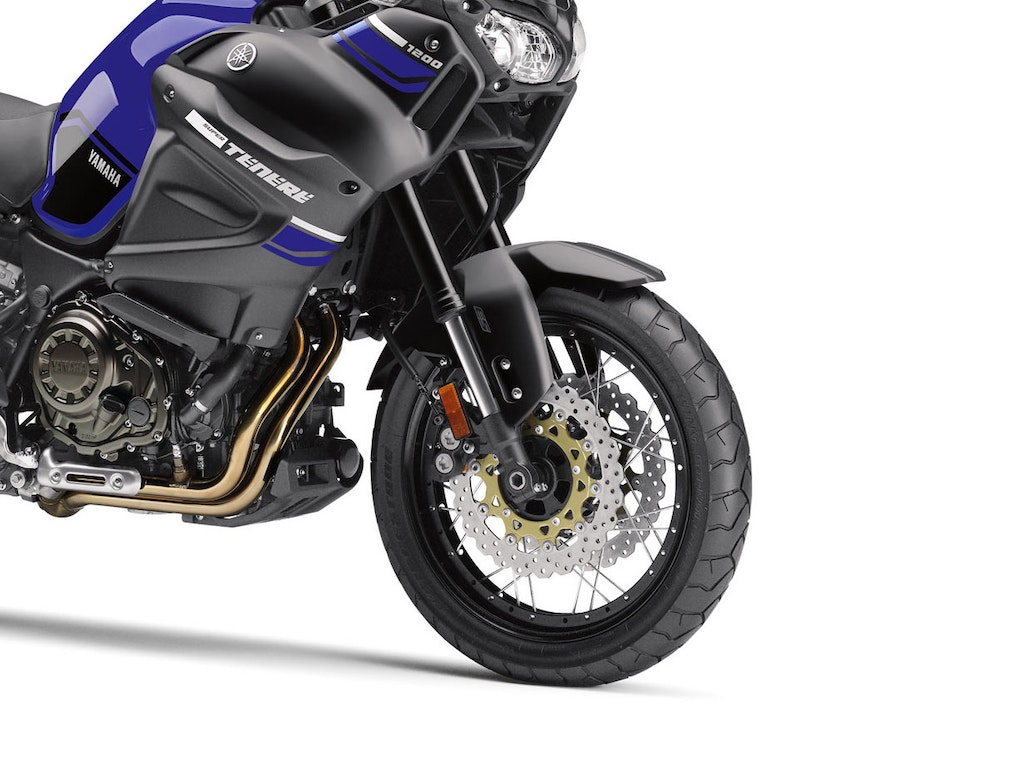Choosing the right tires for your motorcycle can be confusing, but it’s important for all riders to know the differences between tube and tubeless tires and where each type is best used. In this detailed guide, we’ll explain the differences and benefits of tube and tubeless motorcycle tires so you can make a smart choice.
Tube Type Tires
Origins and Design

The Suzuki Van Van 200 is a retro bike, even down to its tubed tires.
Tube-type tires, originally developed for bicycles in Ireland in 1888, have evolved into a reliable choice, particularly for spoked wheels. Spoked wheels pose a challenge for maintaining air pressure due to their rim design. These wheels remain prevalent in the motorcycle industry, offering superior cushioning and shock absorption compared to traditional cast wheels. Surprisingly, about one-third of motorcycles around the world still use tube-type tires.
However, tube-type tires have certain drawbacks. They tend to wear out faster than their tubeless counterparts, primarily due to increased heat generation caused by the inner tube. Moreover, punctures in tube-type tires result in rapid air loss, amplifying the risk for the rider.
Tubeless Tires
Sealed for Efficiency

This Yamaha Super Ténéré has tubeless aluminum rims. The spokes mount externally, so the seal isn’t compromised.
Tubeless tires have gained popularity in recent years, primarily because they can establish an airtight seal with the rim. These tires are designed with highway driving in mind, as cast wheels are not as effective at absorbing shocks as spoked wheels. Tubeless tires run at cooler temperatures, ensuring longevity, and exhibit superior air retention in the event of a puncture. This capability allows riders to reach safety or perform a swift plug repair, enabling them to continue their journey promptly.
Comparison: Tube vs. Tubeless Tires
Tube Type Tires
Pros:
- Tube replacement instead of the entire tire.
- Highly effective for spoked wheels.
- Suitable for off-roading and rough terrain.
Cons:
- Tube replacement necessary when punctured.
- Reduced tire lifespan during long-distance rides.
- Assortment of tube sizes required for specific tire compatibility.
Tubeless Tires
Pros:
- Longer-lasting tires.
- Punctures can be quickly plugged and adequately repaired.
- More suitable for highway riding.
Cons:
- Complete tire replacement necessary.
- Not suitable for off-road conditions.
- Rims can bend and need to be replaced.
When deciding between tube and tubeless motorcycle tires, it comes down to what you like and need. Tube tires are great for off-road and spoked wheels but need careful care. Tubeless tires work well on highways, last a long time, and are easy to fix if you get a flat tire. Think about how you ride and what’s most important to you when making your choice.
If you’re eager to enhance your motorcycle tire’s lifespan even further, consider exploring Counteract’s motorcycle products. To learn more, visit Counteract for Motorcycles and start maximizing your riding experience today!



